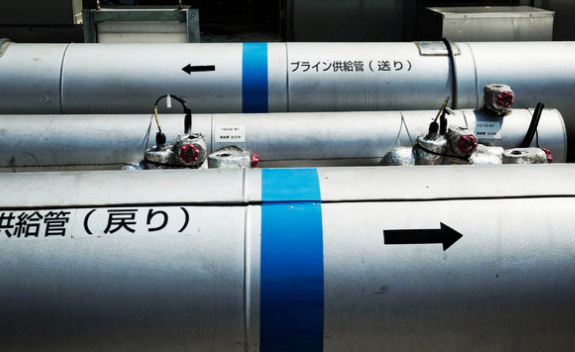Fukushima ice wall plan attempts to end 5 years of flooding
09/06/2016 / By fukushima

In an effort to block the ongoing flood of groundwater into the Fukushima Daiichi Nuclear Power Station, the central government has embarked on an ambitious and expensive plan. The project, called the Land Side Impermeable Wall, seeks to end 5 years of groundwater flooding into the power station, as well as the leakage of radioactive water into the Pacific Ocean, which has decreased but may still be continuing.
Article by Ally Stackhouse
The project, most often referred to as the ‘ice wall’, seeks to create a wall of manmade permafrost, or frozen soil, to act as a dam to stop groundwater from flooding into the buildings. The ice wall has been criticized for what is seen by some as excessive cost and complexity. The project cost the government 35 billion yen, or about 320 million dollars. The plant’s operator recently announced that a section which had been turned on more than four months ago was not yet fully frozen. Furthermore, the project has been criticized as being equally vulnerable to natural disasters as the plant itself.The plant has always been at risk of an influx of groundwater, since the Tokyo Electric Power Co (Tepco) cut away part of a hillside to build the plant in the 1960s. This allowed the plant greater access to pump in water, but also put the plant at much higher risk for flooding by groundwater from the Abukuma Mountains nearby. However, this did not become a problem until the earthquake and 45-foot tsunami in March of 2011. It is unclear whether it was the earthquake and accompanying tsunami themselves, or the resulting meltdowns in 3 out of 6 reactors that cracked the basements allowing the flood of groundwater. In any case, the groundwater becomes highly radioactive inside the plant, serving as an obstacle to efforts to dismantle the plant entirely. Uranium fuel inside the plant became hot enough to melt through the steel floors of the reactor, leaving the uranium somewhere in the basement. The flooding of radioactive water has stopped engineers from finding and removing the fuel. Five separate robots have been sent into the building, and all were lost inside due to high radiation and debris.Tepco must now attempt to pump out the floodwaters faster than they are coming in, to stop radioactive water from flowing into the Pacific Ocean. The grounds of the plant are now almost entirely filled with 95-foot water tanks, now holding over 800,000 tons of radioactive water.The pipes and refrigeration units for the ice wall project were completed in February. Portions of the ice wall were switched on in March and June. Recently, Tepco told Japan’s Nuclear Regulation Authority that the wall was about 99 percent solid, attributing the failure to freeze certain spots to sand and rubble leftover from the plant’s construction. The company is attempting to plug these holes using quick-dry cement. Time will tell as to whether this expensive and controversial solution will succeed.
Read more at thewestsidestory.net
Submit a correction >>
Tagged Under:
Flooding, Fukushima, Ice Wall, Nuclear Accident, radiation
This article may contain statements that reflect the opinion of the author
RECENT NEWS & ARTICLES
COPYRIGHT © 2017 FUKUSHIMAWATCH.COM
All content posted on this site is protected under Free Speech. FukushimaWatch.com is not responsible for content written by contributing authors. The information on this site is provided for educational and entertainment purposes only. It is not intended as a substitute for professional advice of any kind. FukushimaWatch.com assumes no responsibility for the use or misuse of this material. All trademarks, registered trademarks and service marks mentioned on this site are the property of their respective owners.




















